Dimitrios Michael Manias
Network Resource Optimization for ML-Based UAV Condition Monitoring with Vibration Analysis
Feb 21, 2025Abstract:As smart cities begin to materialize, the role of Unmanned Aerial Vehicles (UAVs) and their reliability becomes increasingly important. One aspect of reliability relates to Condition Monitoring (CM), where Machine Learning (ML) models are leveraged to identify abnormal and adverse conditions. Given the resource-constrained nature of next-generation edge networks, the utilization of precious network resources must be minimized. This work explores the optimization of network resources for ML-based UAV CM frameworks. The developed framework uses experimental data and varies the feature extraction aggregation interval to optimize ML model selection. Additionally, by leveraging dimensionality reduction techniques, there is a 99.9% reduction in network resource consumption.
Semantic Routing for Enhanced Performance of LLM-Assisted Intent-Based 5G Core Network Management and Orchestration
Apr 24, 2024Abstract:Large language models (LLMs) are rapidly emerging in Artificial Intelligence (AI) applications, especially in the fields of natural language processing and generative AI. Not limited to text generation applications, these models inherently possess the opportunity to leverage prompt engineering, where the inputs of such models can be appropriately structured to articulate a model's purpose explicitly. A prominent example of this is intent-based networking, an emerging approach for automating and maintaining network operations and management. This paper presents semantic routing to achieve enhanced performance in LLM-assisted intent-based management and orchestration of 5G core networks. This work establishes an end-to-end intent extraction framework and presents a diverse dataset of sample user intents accompanied by a thorough analysis of the effects of encoders and quantization on overall system performance. The results show that using a semantic router improves the accuracy and efficiency of the LLM deployment compared to stand-alone LLMs with prompting architectures.
Machine Learning for Pre/Post Flight UAV Rotor Defect Detection Using Vibration Analysis
Apr 24, 2024Abstract:Unmanned Aerial Vehicles (UAVs) will be critical infrastructural components of future smart cities. In order to operate efficiently, UAV reliability must be ensured by constant monitoring for faults and failures. To this end, the work presented in this paper leverages signal processing and Machine Learning (ML) methods to analyze the data of a comprehensive vibrational analysis to determine the presence of rotor blade defects during pre and post-flight operation. With the help of dimensionality reduction techniques, the Random Forest algorithm exhibited the best performance and detected defective rotor blades perfectly. Additionally, a comprehensive analysis of the impact of various feature subsets is presented to gain insight into the factors affecting the model's classification decision process.
Towards Intent-Based Network Management: Large Language Models for Intent Extraction in 5G Core Networks
Mar 04, 2024Abstract:The integration of Machine Learning and Artificial Intelligence (ML/AI) into fifth-generation (5G) networks has made evident the limitations of network intelligence with ever-increasing, strenuous requirements for current and next-generation devices. This transition to ubiquitous intelligence demands high connectivity, synchronicity, and end-to-end communication between users and network operators, and will pave the way towards full network automation without human intervention. Intent-based networking is a key factor in the reduction of human actions, roles, and responsibilities while shifting towards novel extraction and interpretation of automated network management. This paper presents the development of a custom Large Language Model (LLM) for 5G and next-generation intent-based networking and provides insights into future LLM developments and integrations to realize end-to-end intent-based networking for fully automated network intelligence.
Leveraging Large Language Models for DRL-Based Anti-Jamming Strategies in Zero Touch Networks
Aug 18, 2023


Abstract:As the dawn of sixth-generation (6G) networking approaches, it promises unprecedented advancements in communication and automation. Among the leading innovations of 6G is the concept of Zero Touch Networks (ZTNs), aiming to achieve fully automated, self-optimizing networks with minimal human intervention. Despite the advantages ZTNs offer in terms of efficiency and scalability, challenges surrounding transparency, adaptability, and human trust remain prevalent. Concurrently, the advent of Large Language Models (LLMs) presents an opportunity to elevate the ZTN framework by bridging the gap between automated processes and human-centric interfaces. This paper explores the integration of LLMs into ZTNs, highlighting their potential to enhance network transparency and improve user interactions. Through a comprehensive case study on deep reinforcement learning (DRL)-based anti-jamming technique, we demonstrate how LLMs can distill intricate network operations into intuitive, human-readable reports. Additionally, we address the technical and ethical intricacies of melding LLMs with ZTNs, with an emphasis on data privacy, transparency, and bias reduction. Looking ahead, we identify emerging research avenues at the nexus of LLMs and ZTNs, advocating for sustained innovation and interdisciplinary synergy in the domain of automated networks.
An NWDAF Approach to 5G Core Network Signaling Traffic: Analysis and Characterization
Sep 29, 2022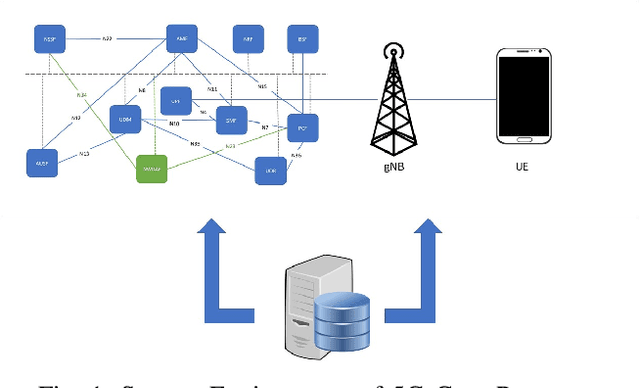
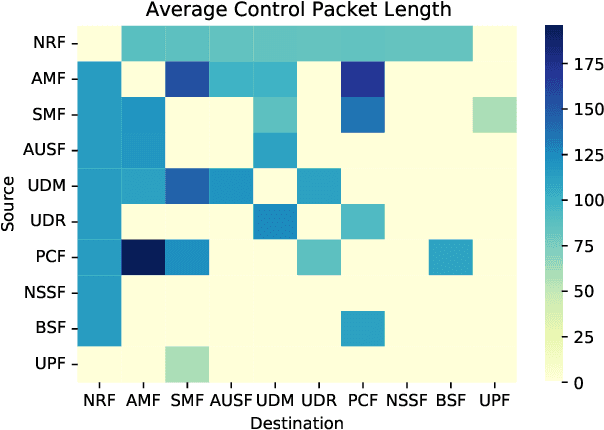
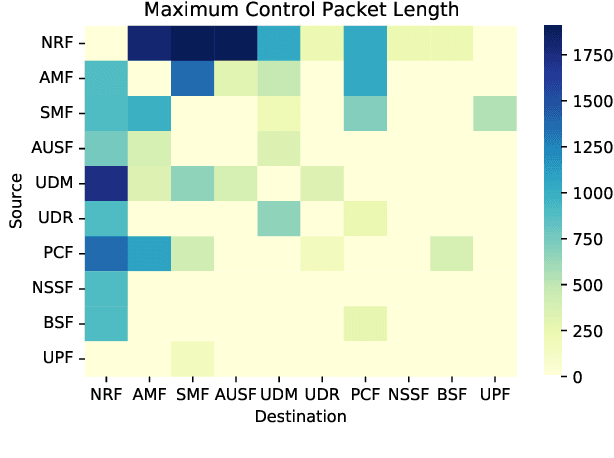
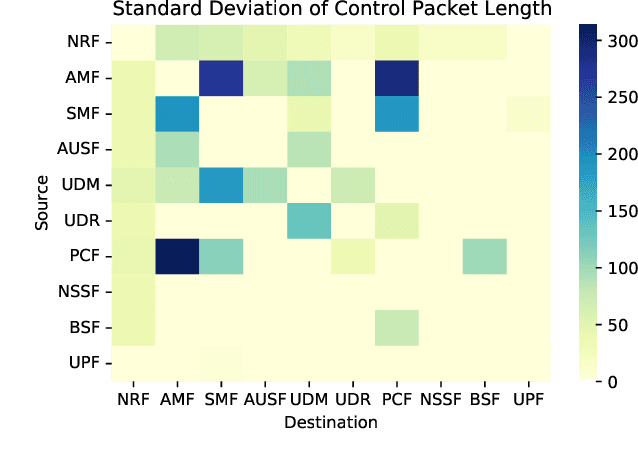
Abstract:Data-driven approaches and paradigms have become promising solutions to efficient network performances through optimization. These approaches focus on state-of-the-art machine learning techniques that can address the needs of 5G networks and the networks of tomorrow, such as proactive load balancing. In contrast to model-based approaches, data-driven approaches do not need accurate models to tackle the target problem, and their associated architectures provide a flexibility of available system parameters that improve the feasibility of learning-based algorithms in mobile wireless networks. The work presented in this paper focuses on demonstrating a working system prototype of the 5G Core (5GC) network and the Network Data Analytics Function (NWDAF) used to bring the benefits of data-driven techniques to fruition. Analyses of the network-generated data explore core intra-network interactions through unsupervised learning, clustering, and evaluate these results as insights for future opportunities and works.
Towards Supporting Intelligence in 5G/6G Core Networks: NWDAF Implementation and Initial Analysis
May 30, 2022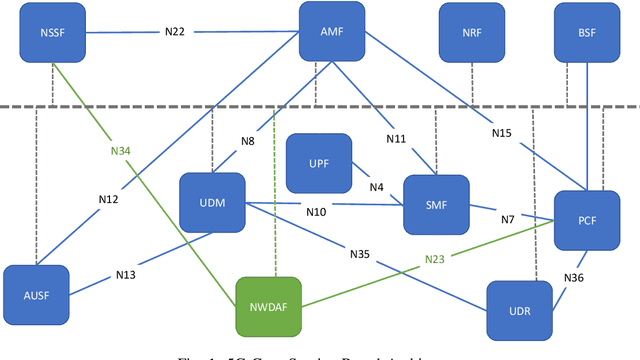
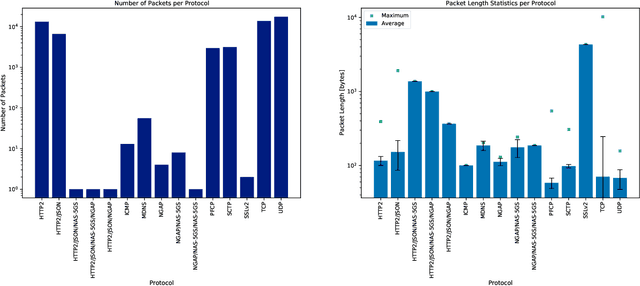
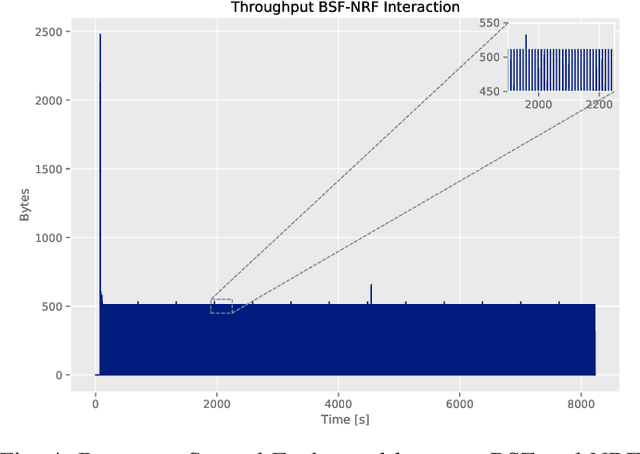
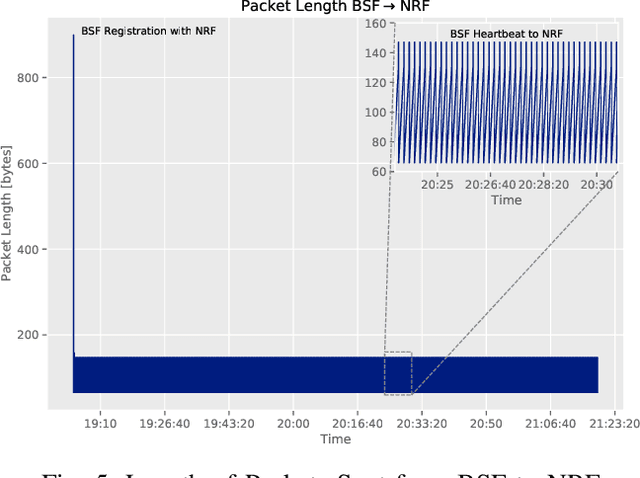
Abstract:Wireless networks, in the fifth-generation and beyond, must support diverse network applications which will support the numerous and demanding connections of today's and tomorrow's devices. Requirements such as high data rates, low latencies, and reliability are crucial considerations and artificial intelligence is incorporated to achieve these requirements for a large number of connected devices. Specifically, intelligent methods and frameworks for advanced analysis are employed by the 5G Core Network Data Analytics Function (NWDAF) to detect patterns and ascribe detailed action information to accommodate end users and improve network performance. To this end, the work presented in this paper incorporates a functional NWDAF into a 5G network developed using open source software. Furthermore, an analysis of the network data collected by the NWDAF and the valuable insights which can be drawn from it have been presented with detailed Network Function interactions. An example application of such insights used for intelligent network management is outlined. Finally, the expected limitations of 5G networks are discussed as motivation for the development of 6G networks.
Concept Drift Detection in Federated Networked Systems
Sep 13, 2021



Abstract:As next-generation networks materialize, increasing levels of intelligence are required. Federated Learning has been identified as a key enabling technology of intelligent and distributed networks; however, it is prone to concept drift as with any machine learning application. Concept drift directly affects the model's performance and can result in severe consequences considering the critical and emergency services provided by modern networks. To mitigate the adverse effects of drift, this paper proposes a concept drift detection system leveraging the federated learning updates provided at each iteration of the federated training process. Using dimensionality reduction and clustering techniques, a framework that isolates the system's drifted nodes is presented through experiments using an Intelligent Transportation System as a use case. The presented work demonstrates that the proposed framework is able to detect drifted nodes in a variety of non-iid scenarios at different stages of drift and different levels of system exposure.
PWPAE: An Ensemble Framework for Concept Drift Adaptation in IoT Data Streams
Sep 10, 2021


Abstract:As the number of Internet of Things (IoT) devices and systems have surged, IoT data analytics techniques have been developed to detect malicious cyber-attacks and secure IoT systems; however, concept drift issues often occur in IoT data analytics, as IoT data is often dynamic data streams that change over time, causing model degradation and attack detection failure. This is because traditional data analytics models are static models that cannot adapt to data distribution changes. In this paper, we propose a Performance Weighted Probability Averaging Ensemble (PWPAE) framework for drift adaptive IoT anomaly detection through IoT data stream analytics. Experiments on two public datasets show the effectiveness of our proposed PWPAE method compared against state-of-the-art methods.
Making a Case for Federated Learning in the Internet of Vehicles and Intelligent Transportation Systems
Feb 19, 2021



Abstract:With the incoming introduction of 5G networks and the advancement in technologies, such as Network Function Virtualization and Software Defined Networking, new and emerging networking technologies and use cases are taking shape. One such technology is the Internet of Vehicles (IoV), which describes an interconnected system of vehicles and infrastructure. Coupled with recent developments in artificial intelligence and machine learning, the IoV is transformed into an Intelligent Transportation System (ITS). There are, however, several operational considerations that hinder the adoption of ITS systems, including scalability, high availability, and data privacy. To address these challenges, Federated Learning, a collaborative and distributed intelligence technique, is suggested. Through an ITS case study, the ability of a federated model deployed on roadside infrastructure throughout the network to recover from faults by leveraging group intelligence while reducing recovery time and restoring acceptable system performance is highlighted. With a multitude of use cases and benefits, Federated Learning is a key enabler for ITS and is poised to achieve widespread implementation in 5G and beyond networks and applications.
 Add to Chrome
Add to Chrome Add to Firefox
Add to Firefox Add to Edge
Add to Edge